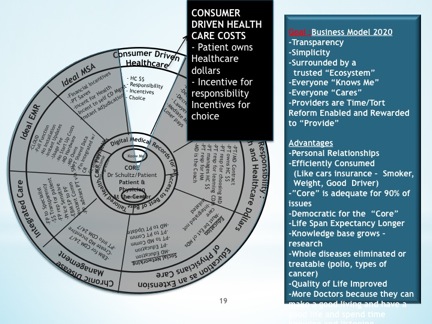The Senate rejected the slimmed-down Obamacare Repeal bill as Senator John McCain was the deciding no vote July 27,2017.
“When Senator John McCain of Arizona returned to Washington with a fresh scar from brain surgery, it was widely seen as a dramatic effort to help Republicans overturn Obamacare.
Little did Mr. Trump know that the Arizona senator would help drive the stake through legislation that sought to realize the Republicans’ seven-year dream of finally dismantling Obamacare.”
John McCain’s vote was a surprise to everyone. Mitch McConnell then put healthcare reform on hold. Senator McConnell decided to let Obamacare die on its own.
However, the Senate rejection did not deter President Trump from pursuing healthcare reform .
He has already approved the development of purchasing associations through an executive order. The associations will sell health Insurance coverage. The rules will go into effect January 1, 2019.
He has also has attacked the drug industry with his blue print on drugs. The regulations from this will decrease the costs of drugs by decreasing the number of middlemen in the manufacture to sales process.
On October 2017 President Trump issued an executive order to promote healthcare choice and competition in the country.
In the executive order President Trump said his goal was to ‘Expanded Availability and Permitted Use of Health Reimbursement Arrangements.
The Secretaries of the Treasury, Labor, and Health and Human Services shall consider proposing regulations or revising guidance, to the extent permitted by law and supported by sound policy, to increase the usability of HRAs, to expand employers’ ability to offer HRAs to their employees, and to allow HRAs to be used in conjunction with nongroup coverage.
The Departments of Treasury, Labor, and Health and Human Services proposed regulations in October 2018 that would significantly expand personalized health benefits to consumers and would offer increasing price pressure to lower insurance prices tor U.S. businesses. Most U.S. businesses want to continue to provide medical coverage for their employees. However they need affordable prices.
The proposals, issued Tuesday, October 23, 2018 by Treasury ,Labor and HHS were a response to the October 2017 executive order from President Donald Trump.
“That order instructed the Departments to increase the availability and usability of health reimbursement arrangements (HRAs)—especially those offered in conjunction with non-group insurance.”
The proposal is well thought out. I have a problem with some of the upcoming regulations but they are an excellent step in the right direction.
The regulations do not utilize a most important element in my ideal medical savings accounts. It does not provide financial incentives for consumers to become informed consumers of healthcare or motivated to save healthcare dollars.
Consumers of healthcare have to be incentivized to become savvy purchasers of their own healthcare and healthcare insurance coverage.
“If enacted, the regulations would create two new HRAs: something we’re calling the individual-integrated HRA, and the smaller, excepted benefit HRA.”
HRAs can be viewed as a superstructure for my ideal medical savings accounts. President Obama did everything he could to discourage the purchase of health savings accounts. His goal was to drive everyone into a single party payer system with the individual consumer’s healthcare decision are made by the government.
Despite President Obama’s attempts to discourage health savings accounts, they grew as the fastest and most popular healthcare insurance product. HSAs permitted consumers to have some control of their healthcare spending and some of their healthcare dollars.
“In 2013, IRS Notice 2013-54 issued guidance on the Affordable Care Act (ACA) that seriously limited businesses’ ability to offer HRAs. The IRS said that while HRAs integrated with group health insurance satisfy key ACA provisions, HRAs integrated with individual health insurance do not.”
This is where Obamacare discouraged consumers to buy HSA as individuals. The insurance was not completely tax free to businesses or individual consumers.
“Congress provided some relief in December 2016 by creating the qualified small employer HRA (QSEHRA). The QSEHRA, a benefit specifically designed for small businesses with fewer than 50 employees, allows businesses to reimburse employees tax-free for their health care costs.”
With his October 2017 executive order, President Trump sought to expand HRAs even further. In the order, he asked the Treasury, the DOL, and the HHS to reexamine past rulings and “increase the usability of HRAs, to expand employers’ ability to offer HRAs to their employees, and to allow HRAs to be used in conjunction with non-group coverage.”
The new proposed regulations are a direct response to that executive order. Unfortunately it does not solve the healthcare insurance problem. The proposal keeps the insurance industry in charge of the healthcare dollars and healthcare decisions. It is a step in the right direction. It helps small business more than it helps the individual.
| QSEHRA “Qualified Small Employer Health Reimbursement Arrangement” | Individual-integrated HRA | |
| Business size restrictions | Only available to businesses with fewer than 50 full-time employees. | None. |
| Employee eligibility requirements | All full-time employees are automatically eligible. Part-time employees can be included, but the HRA must be offered on the same terms. Employees can participate in the HRA without individual health insurance, but those without MEC must pay income tax on all reimbursements during the time they were uninsured. | The business can set eligibility guidelines according to permitted employee classes, but the HRA must be offered on the same terms to all employees in each class. Employees without individual health insurance, including those covered by a spouse’s group policy, cannot participate in the HRA. |
| Allowance amount restrictions | In 2018, annual allowance amounts are capped at $5,050 for self-only employees and $10,250 for employees with a family. The business can vary allowance amounts only by family status, age, and family size, but not based on employee classes. | There are no caps on annual allowance amounts. The business can vary allowance amounts according to permitted employee classes, as well as age and family size. |
| Group policy requirements | Businesses offering the HRA cannot offer a group policy. | Businesses offering the HRA may offer a group policy, but it cannot offer both the group policy and the HRA to the same employee class. |
| Premium tax credit coordination | Individuals participating in the HRA are still eligible for premium tax credits, but the amount of the credit is reduced dollar-for-dollar by the amount of the HRA allowance. | Individuals participating in the HRA aren’t eligible for premium tax credits. |
I will explain each category as well as its advantages and disadvantages in the near future. These regulations do much toward Repairing the Healthcare System.
The opinions expressed in the blog “Repairing The Healthcare System” are, mine and mine alone.
Copywrite 2006-2018
Please have a friend subscribe



